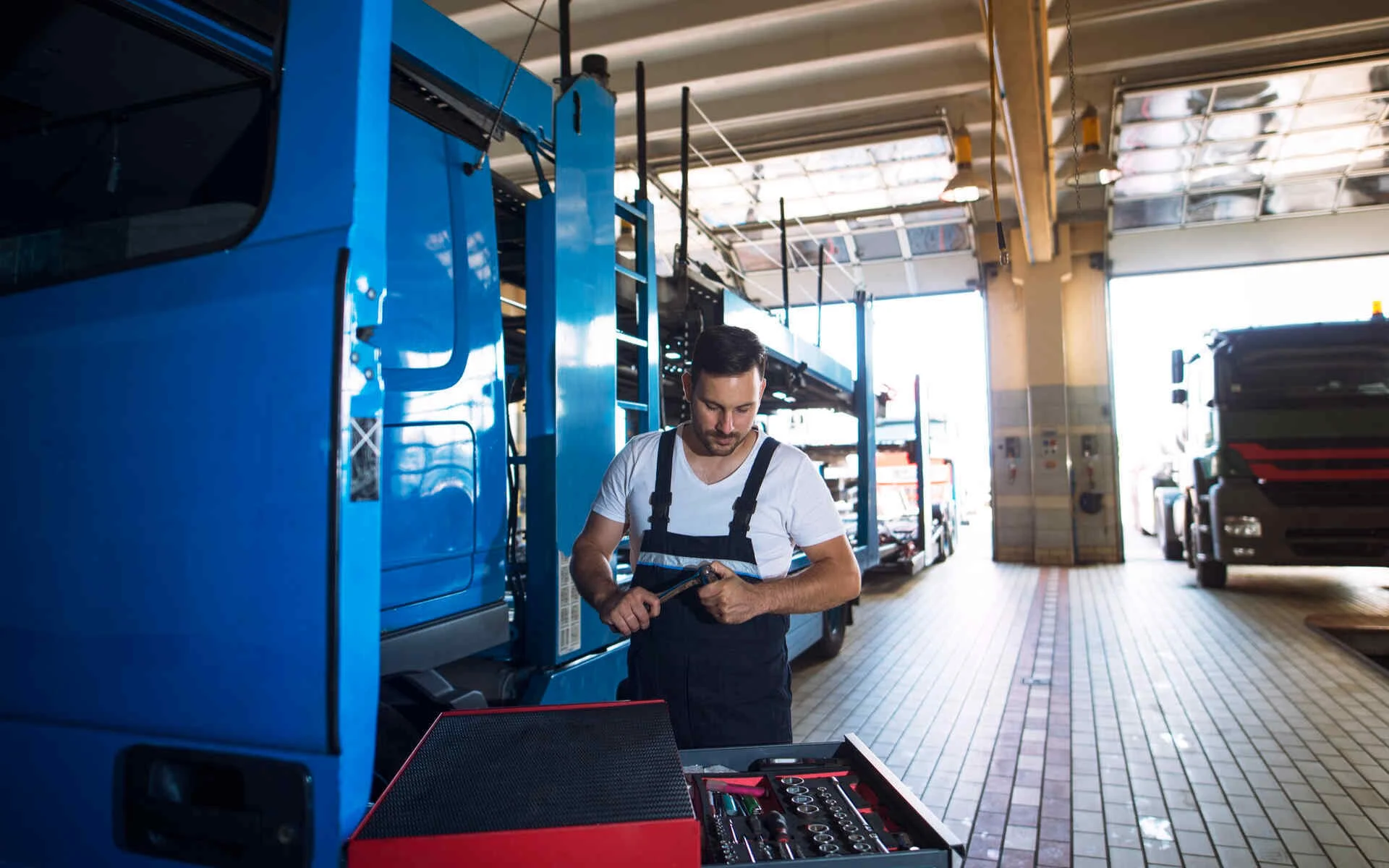

Are you looking to reduce costs for your contractor fleet?
Focusing on fleet safety could be the answer. With a single accident potentially costing thousands, a safe fleet can decrease costs, enhance employee satisfaction, and contribute to smooth day-to-day operations.
Better fleet safety begins with fleet management strategies that support safe driving practices, oversight, and accountability.
How often are your drivers distracted at the wheel? Checking mobile phones and engaging in other dangerous behaviors could be more common than you think. A recent study found that distracted driving impacted 70% of fleets and was a leading cause of fleet accidents.
Protect your fleet and drivers with these strategies:
Distracted driving is a factor in thousands of deadly accidents every year. Besides making drivers safer, eliminating distracted driving helps protect your business and drivers from negligence lawsuits.
Enhanced safety is one of the many reasons to use fleet telematics. If you haven’t embraced telematics yet, it’s time to look into technology adoption for modernizing your approach to fleet management.
Fleet telematics allows you to track data points in real time. Examples include a vehicle’s location, speed, or fuel consumption. You can also monitor dangerous behaviors like excessive braking.
Leveraging data for a safer contractor fleet is a sound approach:
To get the most out of telematics, consider adopting a centralized fleet data platform. You should also consider switching to electric fleet vehicles since electric vehicles (EVs) have more onboard sensors and give improved visibility into vehicle performance and driving behaviors.
New vehicles are packed with smart safety features. With each lineup, automakers are introducing innovative ways to keep drivers and passengers safe. Investing in newer fleet vehicles is the best way to take advantage of these safety features.
Examples include:
Newer fleet vehicles come with an upfront cost, but these smart safety systems are effective solutions for assisting drivers and preventing crashes, even if a driver is momentarily distracted or experiences fatigue. Plus, if an accident happens, these systems can reduce its severity.
Other benefits of investing in newer fleet vehicles include improving driver satisfaction and reducing costs linked to maintenance and repairs.
Did you know that tire-related crashes caused over 500 deaths in 2022? Developing a clear process for inspecting and maintaining fleet vehicles can greatly reduce risks, including preventing tire-related accidents.
There are a few simple checks drivers can conduct before heading out:
A more thorough check conducted by a professional is also recommended. Frequency varies depending on how much mileage your fleet vehicles get and how old they are.
A fleet maintenance partner can check brake fluid, engine oil, power steering fluid levels, and more. Establishing an ongoing partnership with a professional you trust for performing repairs and preventing maintenance is key.
A company culture that values fleet safety is crucial. Encouraging drivers to take pride in their safe driving practices and well-maintained vehicles is key to achieving better fleet safety.
You can develop this culture by prioritizing safety and vehicle maintenance. Incorporating safe driving practices into your onboarding process and ongoing training for drivers can also make a difference.
Fleet managers who offer rewards and incentives to safe drivers often see improved safety and accountability from drivers. You should also pay attention to problematic driving behaviors, for instance, by tracking excessive speeding or braking through telematics. Rather than punishing these behaviors, use your findings to offer additional training.
Creating a safer fleet is an investment that pays off through reduced accidents, lower costs, and improved driver satisfaction. By taking these steps today, you can protect your drivers and vehicles while building a company culture that values fleet safety.
Better fleet management is only one part of the equation. While optimized routes are ideal for delivering your services on time, what about the actual maintenance, repairs, and installation services?
If you’re looking to optimize these processes as well, it’s time to rethink how you buy parts and materials.
With Raiven’s contractor group buying program, you can transform buying with pre-negotiated discounts on all the parts and materials you need, as well as convenient AI-powered buying tools.
Discover the benefits of participating in a premier purchasing program like Raiven. By leveraging the collective buying power of its members, Raiven secures exclusive discounts on automation controls, switchgear, EV charging stations, load shedding, tools, lighting, wire, conduit, and more. And there’s no more negotiating with individual suppliers.
Gain access to pre-negotiated discounts of 7%-30% from industry-leading manufacturers and distributors, including Alpscontrols, ChargePoint, Ferguson, Grainger, Graybar, HD Supply, Home Depot, Lowe’s, Office Depot, Sunbelt Rentals, Schneider Electric, and more!
Raiven is committed to supporting electrical contractors by providing unbeatable prices on equipment, parts, and maintenance supplies. Experience the convenience of our streamlined purchasing platform for quick and efficient procurement. Other key benefits:
Learn more about saving time and money by visiting Raiven.
Summary: Did you know that a majority of fleet drivers are guilty of distracted driving? Let’s take a closer look at fleet safety and explore proven solutions for a safer contractor fleet.
